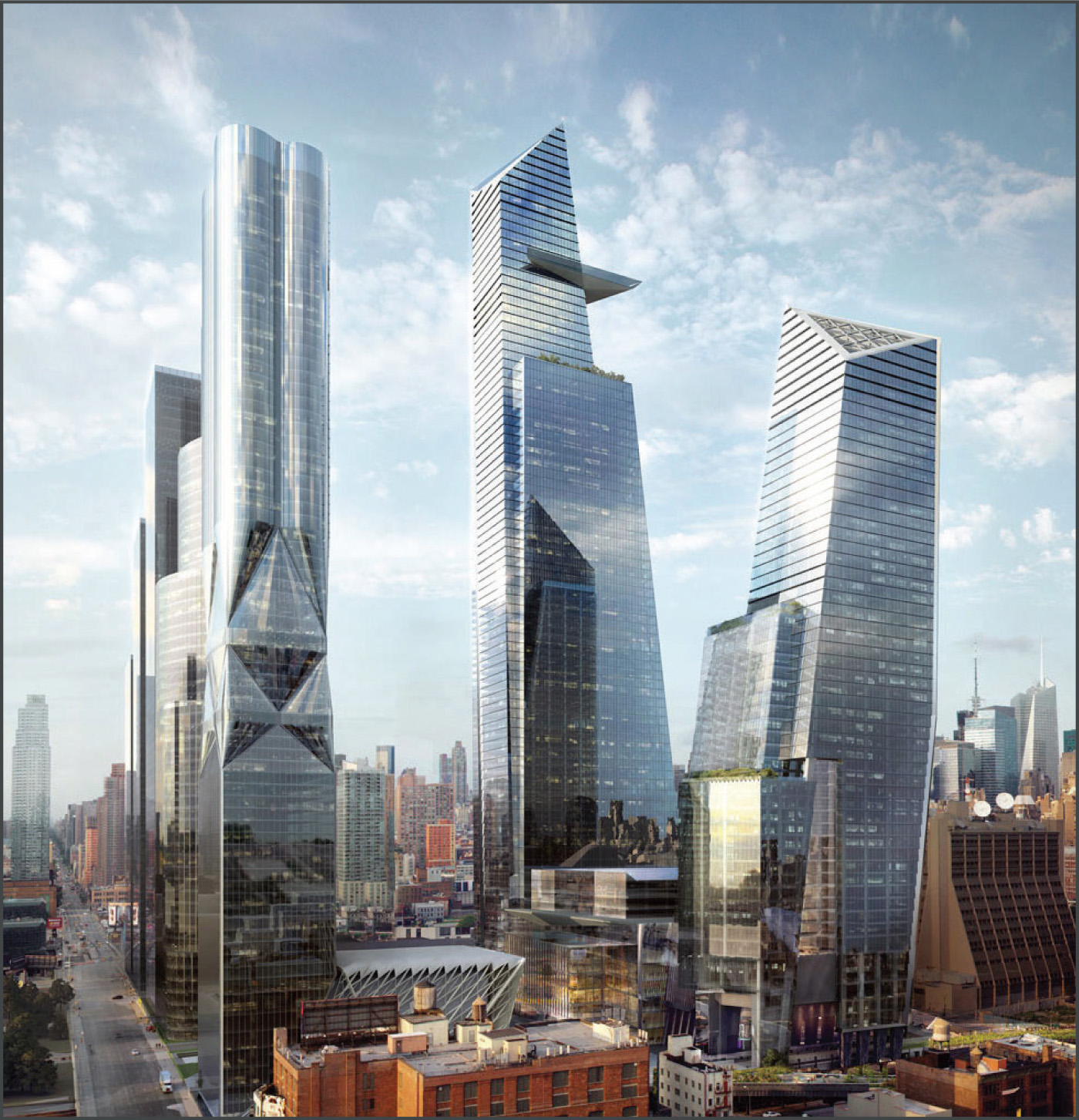Trending
Measuring NYC’s largest project
Checking in on the massive construction effort at Hudson Yards

The Related Companies $20 billion Hudson Yards project has been called the biggest private real estate development in the nation’s history. The multi-tower office, residential and retail complex stretches from 10th to 12th Avenues and from West 30th to West 34th streets. Because the area is home to the Long Island Rail Road’s active rail yards, Hudson Yards is being built primarily on two massive platforms constructed over the rail yards and bisected by 11th Avenue. Construction on the eastern platform began in March. Sixteen buildings will eventually rise at Hudson Yards. Only one of them will be built on terra firma — 10 Hudson Yards, where ground was broken on Dec. 4, 2012. The building will, however, straddle part of the High Line, the final section of which wraps around Hudson Yards’ southern and western portions. Related’s plans call for four office towers, and there are also plans for up to nine residential buildings, along with 6 acres of public space. This month, The Real Deal looked at some of the data on construction at the project.
68,000
Estimated number of visitors who will pass through the 17 million-square-foot complex each day. Plans call for nearly 40,000 workers and residents.
2
Number of retail tenants that have signed on at Hudson Yards. The largest, Dallas-based Neiman Marcus’s first NYC store, will span 250,000 square feet: three floors of the retail complex, which will comprise more than 1 million square feet in total. Fairway Markets is taking 48,000 square feet at 10 Hudson Yards.
$75 million
Amount Related Chairman Stephen Ross says he would pay for the public artwork commissioned from British artist Thomas Heatherwick, who designed London’s 2012 Olympic cauldron. By comparison, Chicago’s “Cloud Gate” cost $23 million.
4
Number of train tunnels that lie beneath Hudson Yards: the Empire Line Tunnel, the Gateway Tunnel (under construction), and the North River Tunnels — a pair of passages through which 445 Amtrak and New Jersey Transit trains and 600,000 passengers pass every day.
24,000
Tons of steel ordered for the first platform, which will also include 14,000 cubic yards of concrete. It will weigh more than 35,000 tons.
$1.3 billion
Amount developer Related is spending on the platforms for both yards; the entire project is projected to cost $20 billion.
14 acres
Portion of the project that will be devoted to public space. Hudson Yards overall is 28 acres.
161
Number of caissons — long, steel tubes 4-5 feet in diameter that are lowered into holes, then filled with concrete — that have been placed since drilling began March to support Hudson Yards’ eastern platform. In all, 300 caissons are planned.
1
Number of cranes in New York that are strong enough to lift the caissons sunk into the ground to support the platform. There are only six such cranes in North America; the workers call the crane “Joanie.” Her heaviest lift to date took place on Oct. 30: a 244,000-pound steel column.
38%
Percentage of the rail yard that can be used to build support structures for the platform. A 100-foot truss will support the weight of the buildings where columns won’t fit because train tracks are too close together for supports to fit in between.
5,000
Number of cubic tons of concrete that have been poured so far to construct the eastern platform. About 90,000 cubic yards have been poured for 10 Hudson Yards, and 22,000 for Amtrak’s Gateway Tunnel.
40
Number of feet above sea level that Hudson Yards’ onsite electric grid will be located to protect from flooding. The grid will be powered by a 13.2 megawatt natural gas co-generation plant and four diesel generators.




